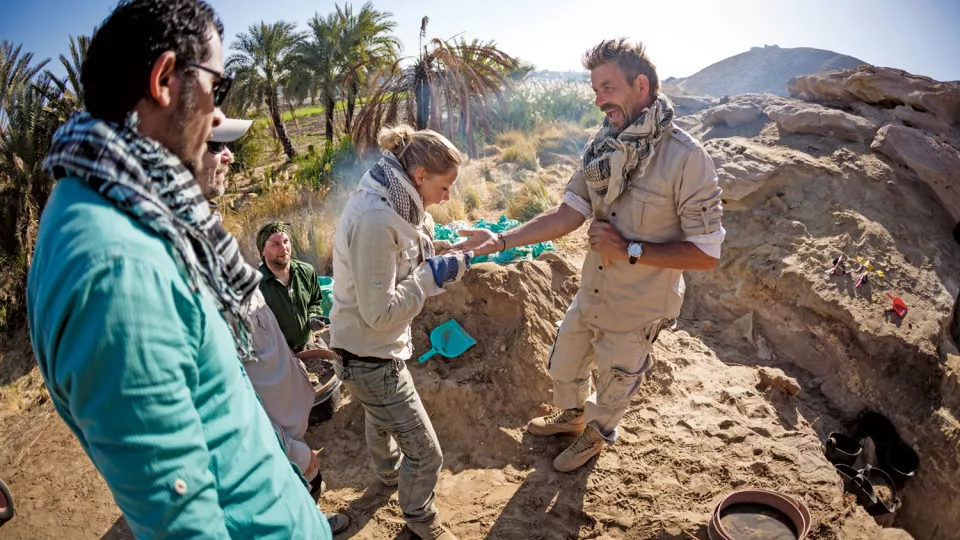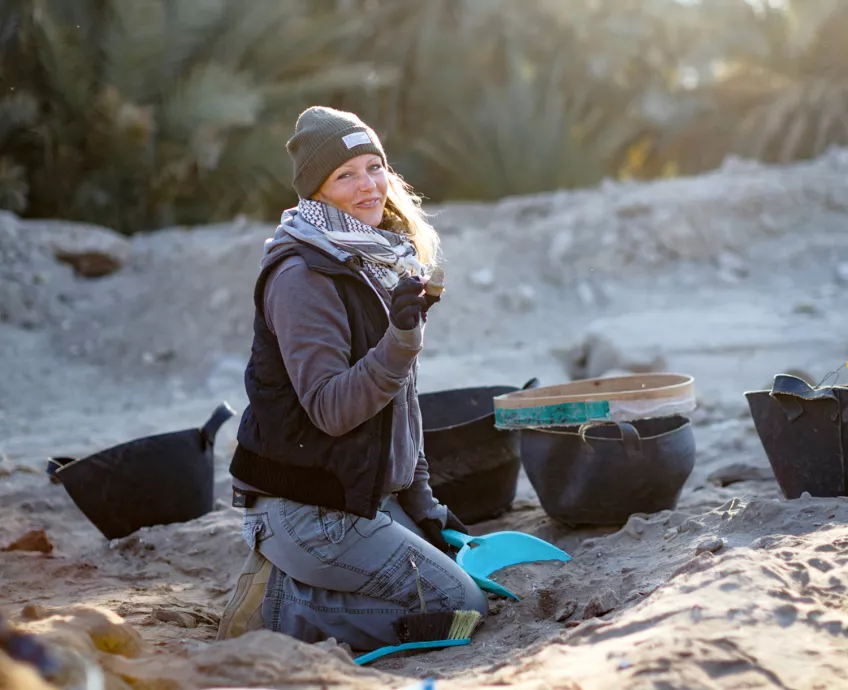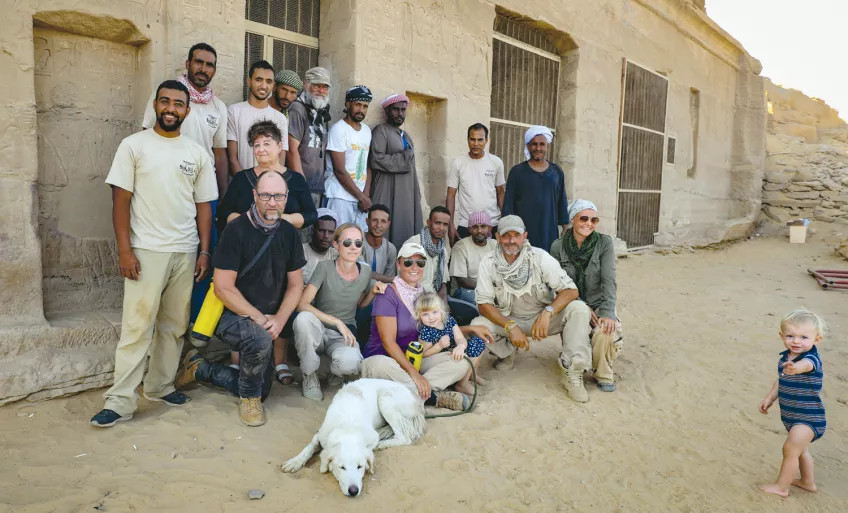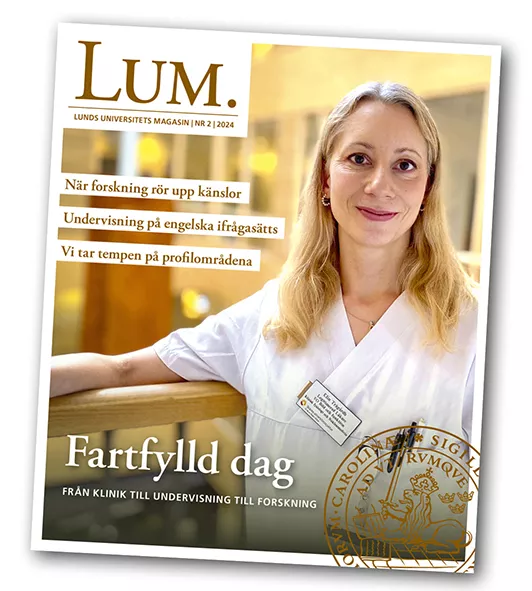“The most common danger is sunstroke – you cannot get away from the sun”, says Maria Nilsson. “But also workplace accidents. My husband John had a tomb ceiling collapse on him.”
Dirty, the team return at two o’clock to the boat on the Nile where they live. By then, the sand has found its way into everything. While they look after the artefacts, eat food and categorise images, Maria and John also live a family life with their two children, Freja and Jonathan. At ten o’clock, it is time for bed.
As a child, Maria Nilsson already knew she wanted to be an archaeologist. Today, she and her husband John Ward run a research project with 85 international researchers, students and volunteers, as well as approximately 30 local workers in Gebel el Silsila in Egypt. The international research team has made several unique discoveries that have received media attention both internationally and nationally. Now, Maria Nilsson has been awarded the Rausing Prize.
The quarry area is the mother of all the sandstone temples in Egypt. In the 30 kilometre-squared area, there are 104 different quarries, all of which have provided stone for a specific temple. The roughly cut stones were then shipped down the Nile to temple constructions in Luxor and southern Egypt, among others.
The team has made several extraordinary discoveries, including a pharaonic tomb – in a water-filled burial site.
“The water-filled tomb is one of our most amazing discoveries. It is untouched and under water and it has functioned like a big washing machine in which everything is tossed around. However, everything is still there and it concerns more than one hundred individuals”, says Maria Nilsson. “This is unusual because many of the treasures in Egypt have been looted.”
The water-filled tomb lies five metres underground and consists of two chambers. The team hoisted up bones and artefacts so they could be dried, documented and categorised. It is like one giant puzzle. The bones have been drying for one year now but the full-scale osteological analysis will not begin until next season.
“An osteologist has divided the bones up, but no analyses have been completed other than on the number of individuals, a part on gender distribution and range of ages”, says Maria Nilsson.
What can be inferred from the number of bones from women and children is that it was a complete society of families living there. The bones also show that they were middle-class with access to medical care and good food.
“All the artefacts we found in the tomb – amulets, scarabs, pearls and signet rings – were so beautiful. They were skilfully made in beautiful materials such as carnelian and granite”, says Maria Nilsson.
The team has found the floor nearly everywhere in both chambers, aside from in the southern part where there is a very heavy boulder. It may be a door to a third chamber.
“My field of research is pseudo-writing and I focus on Graeco-Roman ‘quarry marks’, holy symbols and inscriptions from ca 305 BCE to ca 50 CE”, says Maria Nilsson. Our major projects with funding from the Swedish Research Council and the Swedish Central Bank are researching these.
In Gebel el Silsila, the team has discovered both international symbols such as hourglasses and typically Egyptian symbols such as a ‘situla pail’, a symbol for the goddess Isis. In some cases, the symbols are a mix from different cultures. For example, there may be roman clothes on an Egyptian god. It is possible to discern social classes – the Romans were leaders, the Egyptians were labourers and then there were specialists who came from different countries – Romans, Greeks, Egyptians and Nubians. One of the reasons for the quarry marks was that the Romans were very superstitious and prayed to the gods for help.
Maria Nilsson is currently at home in Sweden. Here, she writes articles and reports. Writing grant applications for the next season of fieldwork is something she does all the time. It seems to have gone well so far and the impression you get of Maria Nilsson is that she is persistent, bold and, above all, passionately interested in what she researches.
“You really have to be dedicated to carry out a project of this size”, says Maria Nilsson. “You also need to realise that you cannot do it all yourself, you have to be able to share and relinquish control”, she continues.





